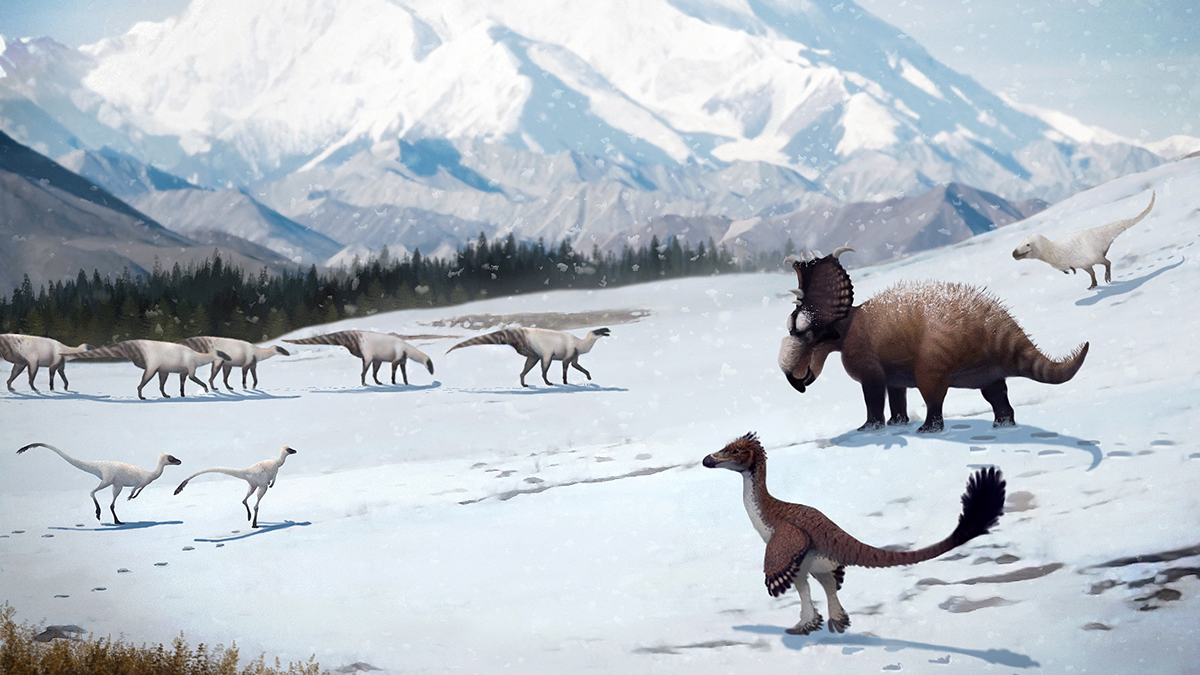OPINION
The demise of the dinosaurs has long been a topic of intense fascination. Not least, it seems, because the realisation that dinosaurs had existed, and just what they were, nicely dovetailed with the Scientific Revolution. Having discovered that a host of gigantic ‘terrible lizards’ once thrived on Earth, the natural question was: what happened to them?
In one sense, they never went away. The descendants of one of the two major branches of dinosaurs, the theropods (which included the infamous T rex, Velociraptor and many more) are still with us: chirping, twittering and fluttering away, birds are the direct descendants of the dinosaurs.
But the dinosaurs themselves, including the stupendous sauropods like Brachiosaurus, are long gone.
So, what happened?
It’s pretty much accepted that the Chicxulub asteroid impact wiped out the dinosaurs in a titanic instant (along with much else) and altered the course of life on Earth forever. But, science being ever anything but settled, there are still quibblers.
In particular, some scientists argue that, even if the asteroid hadn’t blasted the Earth, the dinosaurs were on a trajectory to extinction, anyway.
“One of the things that has been long debated about dinosaur evolution is whether they were reigning strong right up until the time of the meteorite impact, or whether there was a slow, gradual decrease in [the emergence of new species] or an increase in extinction before that time,” one of the researchers, Chris Venditti, from the University of Reading in the UK, told the Guardian.
To figure out what happened, Venditti and his team used statistical analysis and fossil record data to create a family tree of the three main types of dinosaurs: the ornithischians (beaked herbivores), theropods (carnivores such as T rex), and sauropods (long-necked plant-eaters).
They found that while dinosaurs began to flourish during the late Triassic period around 220 million years ago, certain species began dying off faster than they could be replaced around 100 million years later.
Science Alert
On the other hand, as I wrote recently, other scientists dispute this. Paleontologist Robert DePalma, whose been making spectacular finds at the famous Hell Creek formation in Montana, argues that at the time of the impact, life was teeming. Another paleontologist describes Hell Creek as “so thick with T rexes that they were like hyenas on the Serengeti”. Where there was a teeming population of big predators, there must necessarily be an even bigger population of herbivores to sustain them.
If, though, the dinosaurs were in long-term decline, what was the reason? None other than the great boogeyman of our times, climate change (cue spooky music).
Except, hilariously, the case of the dinosaurs doesn’t exactly fit the ‘global warming DOOM!’ narrative we’re supposed to believe.
Climate-triggered volcanic eruptions would have eventually killed the dinosaurs if they hadn’t been wiped out by the malicious vicissitudes of an uncaring universe. Sulfur in the atmosphere was kicking off a cooling period.
That’s right. Global cooling would have wiped out the dinosaurs. Just as the likely most intense cooling in Earth’s history caused its greatest loss of life: the Permian mass extinction, when Earth turned into a gigantic snowball.
Obviously there were none of those wicked fossil fuels when the dinosaurs froze to death. Instead, the culprit was the great driver of global climate (after the Sun) – volcanoes. In particular, the stupendous eruptions called the Deccan Traps.
The Deccan Traps are vast sheets of basalt in western India, covering some 500,000 square kilometres, to a depth of up to 2,000 metres. Originally, they are thought be have been even more vast. Sixty-six million years ago, the area was the site of massive and near-continuous volcanic eruptions, over a period of some 30,000 years.
As would be expected, such colossal volcanic activity pumped a lot of gas and dust into the atmosphere. Especially sulfur. As we’ve seen with the recent Tongan eruption, which ejected vast quantities of water into the atmosphere, a single ‘volcanic burp’ can affect the climate for years.
The volcanoes of the Deccan Traps were in a repeating eruption cycle, and their research indicates the sulfur released by these cycles would have been enough to trigger a global temperature drop.
PhysOrg’s Kelia DePape noted in her analysis of the researcher’s study that this global drop in temperature from volcanic eruptions is commonly referred to as volcanic winter, and it was this volcanic winter that would have doomed the dinosaurs.
“Our research demonstrates that climatic conditions were almost certainly unstable, with repeated volcanic winters that could have lasted decades, prior to the extinction of the dinosaurs,” study co-author Don Baker explained according to DePape.
MSN
Even so, at the time, there were dinosaurs thriving in the Antarctic, and the Arctic, which even then was cold and dark for half the year. But even they would surely have struggled with decades of continuous winter.
Still: what have we learned from all this? Global cooling, not warming, is the real threat. Warming periods in Earth’s history are invariably periods of abundance and thriving life. Cooling periods, on the other hand, are miserable and deadly.
As Professor Ian Plimer said, we must be the first generation in human history to be afraid of a warming climate.

